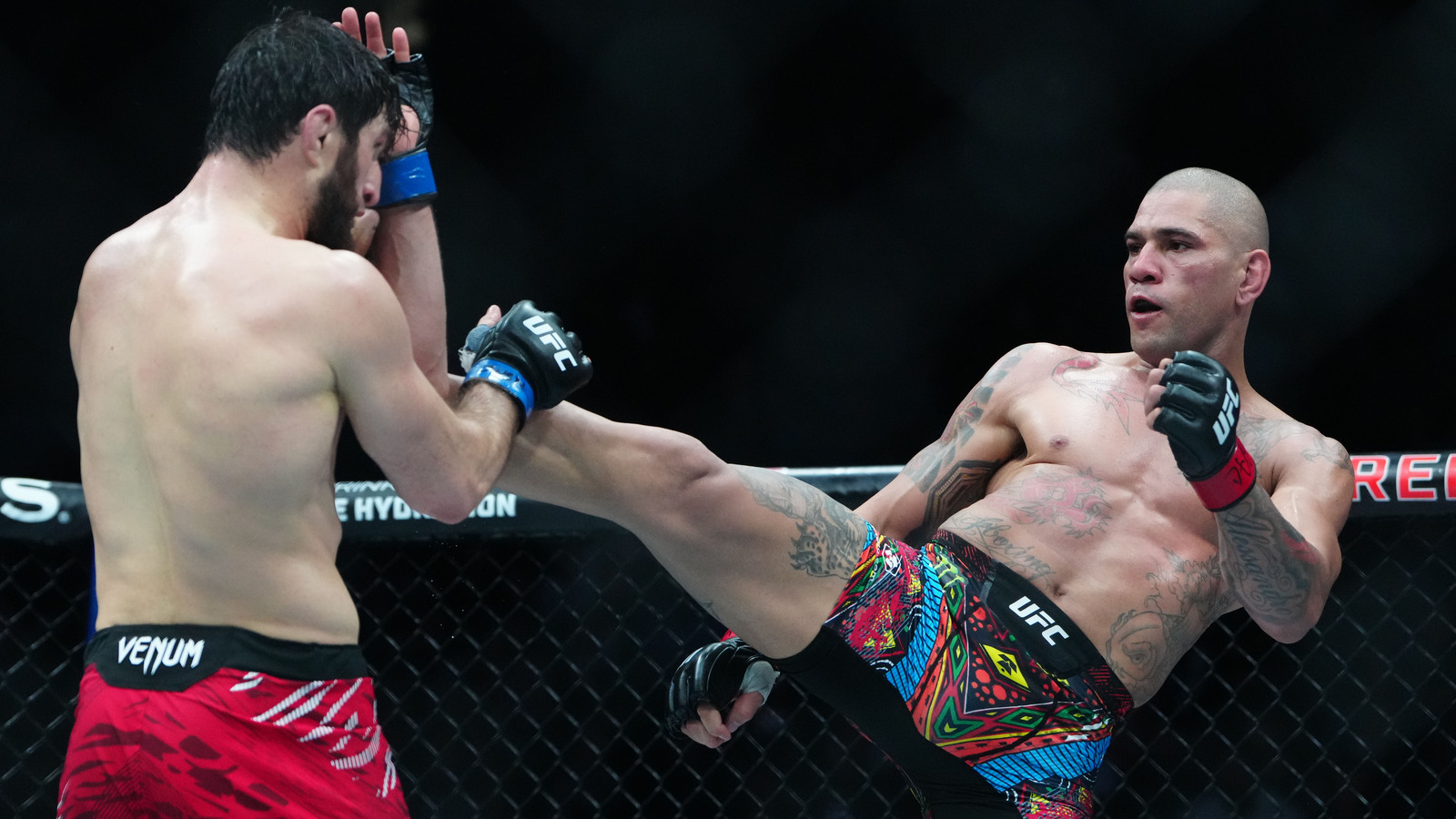
Alex Pereira is one of the most celebrated fighters in the UFC right now. And rightly so! It won’t be too much of a stretch to call him the face of the company. The Brazilian brings in a magnetic personality, although he’s not as loud as some of the other fighters in the promotion. Yet, his iconic get-up during the pre-fight build-up, complete with face paint and a tribal headdress, tells a story.
Fans call him Poatan, the man with “Stone Hands” or “Hands of Stone.” But behind the strikes and stare-downs lies something deeper, a tribute to his ancestors. Now, ahead of his UFC 320 rematch against Magomed Ankalaev, Pereira continues to carry his people’s spirit into battle. His headdress, his paint, his walkout song, they aren’t costumes. They’re symbols. So, what do they really mean?
Why does Alex Pereira wear a headdress? More about his tribal attire
Alex Pereira comes from the Pataxo tribe, which consists of indigenous people from his native Brazil. ‘Poatan’ dons his traditional headdress, which is usually composed of vivid colors and eagle feathers, and is a way of staying connected to his roots. It was evident when he put up a show of intimidation against his former arch-nemesis, Israel Adesanya, a rivalry for the ages, in and out of the cage.
The 205lbs gold standard has previously spoken about how finding out about his roots has made him feel better about himself in the cage. This, in turn, has made him invoke his ancestors’ pride and the desire to honor his legacy even more.
The Brazilian juggernaut even opened up on his decision to showcase his traditional headwear, which appears to have taken shape when he started his fighting career. “When I first started to train in kickboxing, my first teacher had indigenous roots. I went home the same day and asked my mom. She said my grandparents were indigenous. It made me feel more confident,” Pereira had once stated in an interview.
But Pereira’s headdress isn’t the only piece in his traditional attire. As we’ve mentioned already, he’s got his face paint, too. But do you know what that really means? Well, let’s take a look at that front.
What does Alex Pereira’s face paint mean?
Alex Pereira’s face paint attire symbolizes his connections with the aforementioned Pataxo tribe, found in the Bahia region in his native country. His tattoos, too, are a symbol of his origins as well. It symbolizes his connection to the roots, and guess what? Pereira likes to link himself to his culture whenever he steps up for a fight to draw the energy and support of his ancestors. Fans can see him sport that look when he appears during weigh-ins.
One by one, he kept introducing more and more symbols of his roots to his professional life- the walkout, the tattoos, and then the whole getup. ‘Poatan’ too, in fact, is a name that comes from similar roots. It’s the Tupi-Guarani name that means ‘Stone Hands’.
Before UFC 313, that connection deepened. When Alex Pereira landed in Las Vegas, he was seen wearing a different design of a headdress as he got out of the plane. Claiming that it was made out of eagle feathers, ‘Poatan’ got this headdress from a Pataxo tribe leader after giving him his old one because of how important the fight against Magomed Ankalaev was for the light heavyweight champion, as it could have helped cement his status in the record books for the 205-pound division.
“This is a special headdress. My brother Ubiranan, and we exchanged headdresses. I told him my next fight would be a very important one. It would be a new phase,” Alex Pereira was seen saying on the UFC 313 Embedded: Vlog Series. “He told me he’d do a special headdress with eagle feathers, that mean vision. We are going to fight. Whoever is in there is ready for it.”
Unfortunately, that night ended in disappointment as Alex Pereira lost his crown via a unanimous decision. But what ties it all together is the sound that fills the arena before he even steps inside.
Alex Pereira’s walkout song
Pereira’s entrance isn’t just a walk, it’s a ritual. The soundtrack? Itsári by Brazilian heavy metal legends Sepultura. The word Itsári comes from the Xavante language and means “Roots.”
The song has no lyrics, only rhythm with drums that rumble like distant thunder. It’s both heavy and spiritual, echoing the heartbeat of the forest and the pulse of Pereira’s people. Like his attire, the track is a tribute to Brazilian Indigenous traditions.
As Pereira once explained, “My first teacher had indigenous roots. I went home the same day and asked my mom. She said my grandparents were indigenous. It made me feel more confident. We wanted to resurrect my origins and indigenous culture. I made a ritual with a bow and arrow. Then a sequence with the indigenous music and that’s how it started.”
As such, Alex Pereira’s headdress, paint, and music aren’t just symbols of pride. They’re reminders that even in the chaos of modern combat, tradition endures. Every time he walks to the Octagon, it’s more than a fight. It’s a ritual of remembrance. And as he prepares for his UFC 320 rematch with Magomed Ankalaev, the question remains: will he find redemption this time? Let us know in the comments below!